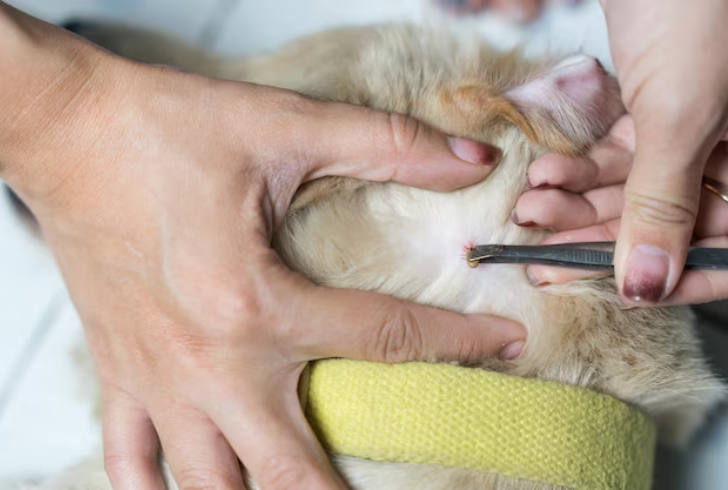As the warm season settles in across Michigan, so does an unwelcome visitor—ticks. These tiny, silent hitchhikers aren’t just a nuisance. They're a real health risk to both people and pets, especially as deer ticks continue to spread across the state.
Given that they are most active during the warmer months from April to September, avoiding them during outdoor activities is something that deserves real attention.
Walking through tall grass, wooded paths, or even just spending time in your backyard puts you at risk of crossing paths with these parasites. Deer ticks, in particular, are the ones to watch.
They’re known carriers of Lyme disease, and their numbers in Michigan have surged in recent years, pushing the state’s Lyme cases up by more than 160% since 2020. Last year alone, over 1,200 cases were reported.

Freepik | mumemorieson | Always check your pets for ticks, especially in hidden spots, after they've been outside.
Sticking to trimmed trails and avoiding leaf piles or overgrown brush can go a long way in preventing ticks from making contact. Tall, unmowed areas and damp leaf-covered ground offer perfect hiding spots for ticks. They cling to the edges of leaves and grass, waiting for a warm body to brush past.
Protecting yourself is fairly simple with a few steps:
1. Use repellents approved by the EPA that contain ingredients like DEET. These can be applied to both your clothing and skin.
2. Treat your clothes with permethrin. This chemical kills ticks on contact, but should never be used directly on the skin.
3. After any outdoor time, check yourself thoroughly. Pay close attention to your hairline, ears, underarms, waistline, and behind the knees.
4. For pets, ask your vet about prevention. Options include chewable tablets, topical treatments, and collars—some of which can be bundled with heartworm meds.
Don’t forget to check your furry friends, too. Ticks often hide between their toes, under their collar, and in soft spots like under their legs or around their ears. Run your fingers through their coat, especially if they’ve been out in wooded or grassy areas.

Freepik | alirezahbnon | Use the right repellents to keep ticks away from you and your pets.
If you do find a tick, remove it immediately using tweezers. Grip it as close to the skin as possible and pull straight out—don’t twist. After removal, clean the area and watch for symptoms like fever, fatigue, muscle aches, or a rash shaped like a bullseye.
These signs could appear within two weeks and require medical attention.
Health officials have warned that the sharp uptick in Lyme disease cases is tied to the expanding range of blacklegged ticks across both peninsulas. A spokesperson from the state’s health department noted the rise before Memorial Day weekend, saying, "It’s important for residents to take simple steps to avoid tick bites as they head outdoors this summer."
Enjoying the outdoors doesn’t have to come with the risk of ticks. A few simple precautions and regular checks can help keep you and your pets safe. Whether it’s a quick walk or a weekend hike, staying prepared makes all the difference.
